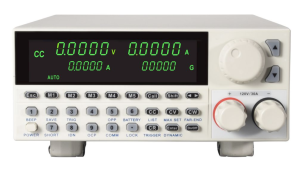Bought an RND320-KEL103 , you can find it with several names like KORAD, TENMA.
Besides the bad interface that requires a computer to know the capacity of a battery it seems solid, but until now I found 2 problems first is a bug in software, image you are testing a cell discharging at 15A and you already got 64Ah if you increase the current to 30A it will display a capacity of 128Ah, so until they fix the software don't change discharge amps on the fly.
Second, silicone cables look good but the fork terminals are very bad with high resistance that will mess your readings, remove them and crimp good cooper ones that can handle the 30A.
I couldn't found in the manual how to use sense port but is simple press shift + far end and it will get the volts from green plug in the back.

Besides the bad interface that requires a computer to know the capacity of a battery it seems solid, but until now I found 2 problems first is a bug in software, image you are testing a cell discharging at 15A and you already got 64Ah if you increase the current to 30A it will display a capacity of 128Ah, so until they fix the software don't change discharge amps on the fly.
Second, silicone cables look good but the fork terminals are very bad with high resistance that will mess your readings, remove them and crimp good cooper ones that can handle the 30A.
I couldn't found in the manual how to use sense port but is simple press shift + far end and it will get the volts from green plug in the back.

Last edited:


